Courts and Courtly Arts in Renaissance Italy: Arts, Culture and Politics, 1395-1530

(fb2, 444 страницы, 2 258 Kb)
Жанр: ACC Distribution
Издательство: ACC Distribution, 2010
Italian Renaissance art is closely intertwined with the development of courts and court culture in much of the Italian territory. The patronage of the ruling families of the small Italian city-states greatly favoured the flourishing of the figurative arts, in architecture, but also in music, literature, and theatre. The initial essay on the political geography of Renaissance Italy is particularly important because it illustrates graphically (with the help of maps) the great territorial fragmentation of the Italian city-states, often very famous in the history of art and culture, but literally very small and with smaller, quasi-independent cities within them. Music and literature — often overlooked in general books on the Italian Renaissance — were a form of sophisticated entertainment but, at the same time, instrumental to increase the perception of magnificence (stately grandeur and lavishness) of the Prince. So, for instance, the chapter on literature begins with the role of the humanists at court, literature and propaganda (with reference to the many histories of ruling families written at court), theatrical representations, the new bucolic poetry and the eclogue, and the advent of print and the birth of the most famous Renaissance books: the 'Libro del Cortegiano' (The book of the Courtier) by Baldassare Castiglione and the 'Orlando Furioso' by Ludovico Ariosto. The second, longer part, is arranged geographically and, bringing together the best of Italian scholarship, covers the entire peninsula, giving attention not only to the major courts, such as Milan, Naples, Mantua, Ferrara, but devoting shorter chapters to some of the minor courts spread around northern and central Italy, from Rimini ruled by the Malatesta family to Carpi under the Pios, Bracciano ruled by the Orsini, etc. Attention is given also to city-states without a proper court, for instance Florence, which was informally ruled by the Medici family but was a republic. Additional text boxes provide detailed information on specific arguments such as cardinals' courts in Rome or Federico da Montefeltro's fortresses. At the end of each chapter a short, annotated bibliography helps the reader to find the most important texts on the topic. A final part includes the genealogies of the ruling families, the general bibliography and a series of indexes (names, places and works of arts, main themes). In the index of names dates and a short definition is given for all historical figures (e.g.: Leto, Pomponio [1425-1498], humanist and founder of the Roman Academy).